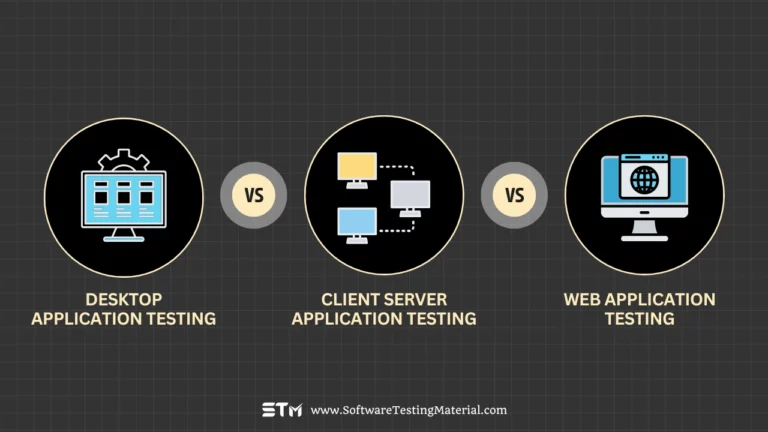Alpha Testing vs Beta Testing: Everything You Should Know
Alpha and Beta testing are important stages in the software development process. They help ensure that a product is functional, reliable, and ready for end-users. While both types of testing aim to find and fix issues, they differ in purpose, timing, and the people involved. Understanding these differences is key to delivering high-quality software.
What is Alpha Testing?
Alpha testing happens during the early stage of software development. It is done by internal teams, such as developers and testers, to find bugs and issues. This type of testing focuses on improving the product before sharing it with real users.
Read more: Alpha Testing Guide
What is Beta Testing?
Beta testing happens after alpha testing and is done by real users outside the company. The goal is to see how the software works in real-world conditions. It helps find any remaining bugs and get feedback from users before the final release.
Read more: Beta Testing Guide
Difference Between Alpha Testing and Beta Testing: Everything You Should Know
| Alpha Testing | Beta Testing |
|---|---|
| First stage of user acceptance testing. | Second stage of user acceptance testing. |
| Objective is to make sure that application is working as expected, all functional and performance issues are closed, and application is ready for Beta testing. | To validate that application is satisfying customer needs and requirements completely, customer accept the system by validating all the business scenarios with approval that now system is ready to be launched to its real end users. |
| It is performed by In-house testing team. | It is performed by end users. |
| It is done in the premises where entire team is involved [test and development], it is called lab testing. | It is done at customer premises where no one from development and testing team is present, it is called real time testing. |
| Alpha Testing requires long execution cycle depends on what and how many issues are uncovered. | Beta Testing requires only few weeks of execution. |
| It is done after System testing, when testing team has completed functional, performance and compatibility testing, and system testing is completed, Alpha testing is performed. If any issue is found, on the basis of issue severity issue is fixed and again retesting and regression testing is done. Or Application goes with Open known Issues for Beta testing. | Beta testing is done after Alpha testing is done, With a testing sign off, when all major issues are closed and system is in ready state for use. |
| It requires test environment. | It doesn’t require test environment. |
| Both White box and Black box testing involves in this. | Mainly Black box testing involves in this. |
| Major issues are fixed immediately in Alpha testing. | Issues are collected from the end users and fix them later in Beta testing. |
| Testing, retesting and regression testing is done, means multiple rounds of testing is performed to find issues. | Beta testing is the final testing and it is done on final tested environment and it is done only once. |
| While Alpha testing main testable feature is in-depth functionality, compatibility, performance and usability. Here security and reliability is not a major testing concern. | While Beta testing main high level business scenarios, application reliability, disaster recovery, application security and usability is the main testing concern, all stakeholders should be satisfied with the application functionality and quality. |
| If any high severity issue comes while Alpha testing, cost to fixing is relatively less then Beta testing phase. | If any high severe issue comes in Beta testing then cost of fixing is very high, plus company creditability is also at risk. |
| System Testing is done before Alpha Testing. | Alpha Testing is done before Beta Testing. |
| Beta testing is done after Alpha testing. | Product is released to the public after Beta Testing. |
| Functionality, usability are tested in alpha testing. Reliability and Security testing are not performed in-depth during alpha testing. | Functionality, Usability, Reliability, Robustness, Security testing are performed during beta testing. |
| The build released for Alpha Testing is called Alpha Release. | The build released for Beta Testing is called Beta Release. |
| It evaluates the quality of the product. It answers “Does the product work?” | It evaluates the customer satisfaction. It answers “Do customers like the product?” |
| It ensures whether the application is ready of beta testing or not. | It ensures whether the application is ready for the production launch. |
| Goal is to find bugs. | Goal is to collect feedback from beta testers and evaluate them. |
| Stakeholders for this testing are In-house developers, Quality Assurance Team. | Stakeholders for this testing are Product Management, Quality Management, and User Experience teams. |
Alpha Testing and Beta Testing – Key Similarities
Both alpha testing and beta testing play crucial roles in the software development lifecycle, ensuring that the final product meets user expectations and is free from major issues. Despite their differences in scope and execution, these testing stages share several key similarities:
- User Feedback Is Central: Both alpha and beta testing aim to gather valuable feedback from users. Whether it’s from internal teams during alpha testing or external users in beta testing, the primary goal is to identify flaws, usability issues, and areas of improvement to refine the product.
- Focus on Product Quality: At their core, both processes are designed to enhance the overall quality of the product. By detecting and addressing bugs, crashes, or other defects early in the development cycle, these testing stages contribute to delivering a polished, high-quality final version.
- Iterative Process: Both testing methods involve an iterative approach where feedback from testers is implemented to make continuous improvements. New builds may be released during both stages to address reported issues until the product meets predefined requirements.
- Testing Environment Simulation: While alpha testing typically simulates a controlled environment and beta testing reflects real-world usage, both aim to identify how the product performs under specific conditions. This ensures practical and reliable product behavior in various scenarios.
- Critical for Product Launch Readiness: Both alpha and beta testing are essential in preparing the product for its release. They act as important checkpoints to verify that the product aligns with user expectations and is stable enough for market entry.
By addressing these shared aspects, both alpha and beta testing contribute to the development of a reliable, user-friendly, and successful product.
Which One to Choose: Alpha or Beta Testing?
Choosing between alpha and beta testing depends on the specific goals and stage of your product development. Alpha testing is ideal when the focus is on identifying and fixing bugs early while ensuring the core functionality of the product meets initial requirements. It is a controlled environment, usually conducted internally or with a select group, and is essential for stabilizing the product before opening it up to a larger audience.
On the other hand, beta testing is most suitable once the product is stable and near launch-ready. It targets real-world usage by involving external users to gather valuable feedback on user experience, performance, and compatibility under diverse conditions. The insights gained from beta testing help fine-tune the product and address any overlooked issues before the full market release.
Ultimately, many development processes benefit from incorporating both alpha and beta testing to ensure a well-rounded, polished product that resonates with users.
FAQs: Difference between Alpha and Beta Testing
What is the purpose of Alpha Testing?
The purpose of Alpha Testing is to identify and fix bugs or issues in the software before it is shared with real users. It ensures the core features work as expected and helps developers improve the product by testing it in a controlled environment with internal teams.
Who performs Beta Testing?
Beta testing is performed by real users of the software in a real-world environment. These users could be individuals, groups, or organizations who volunteered or were selected to test the product and provide feedback before its official release.
What are the Types of Beta Testing?
There are several types of Beta Testing, including:
Open Beta Testing – The product is released to a large group of users to gather feedback and identify issues.
Closed Beta Testing – Testing is conducted with a specific, limited group of invited users.
Technical Beta Testing – Focuses on gathering feedback from technical users to evaluate performance, reliability, and compatibility.
Marketing Beta Testing – Used to showcase the product’s features and drive interest among potential users before the official launch.
Why is Alpha Testing used?
Alpha testing is used to find and fix bugs in the early stages of product development. It ensures the product works as expected and improves its quality before it is shared with real users. This testing helps developers identify issues that may not be obvious during initial design or coding.
How long does Alpha and Beta Testing take?
The duration of Alpha and Beta testing can vary depending on the complexity of the product. Alpha testing typically takes a few weeks to a couple of months as it involves rigorous internal testing. Beta testing, on the other hand, can last anywhere from a few weeks to several months, depending on the feedback cycle and the number of testers involved.
What comes first, Alpha or Beta Testing?
Alpha testing comes first. It is done internally by the development team to catch and fix major issues before the product is shared with external users. Beta testing follows after alpha testing and involves real users outside the company to gather feedback and identify any remaining problems.
Conclusion
In conclusion, both Alpha and Beta testing are vital steps in creating reliable and user-friendly software. Alpha testing helps find critical issues early in development, while Beta testing gathers feedback from real users in real-world conditions. By understanding and using these testing methods effectively, teams can deliver high-quality products that meet user expectations.
Related posts:






